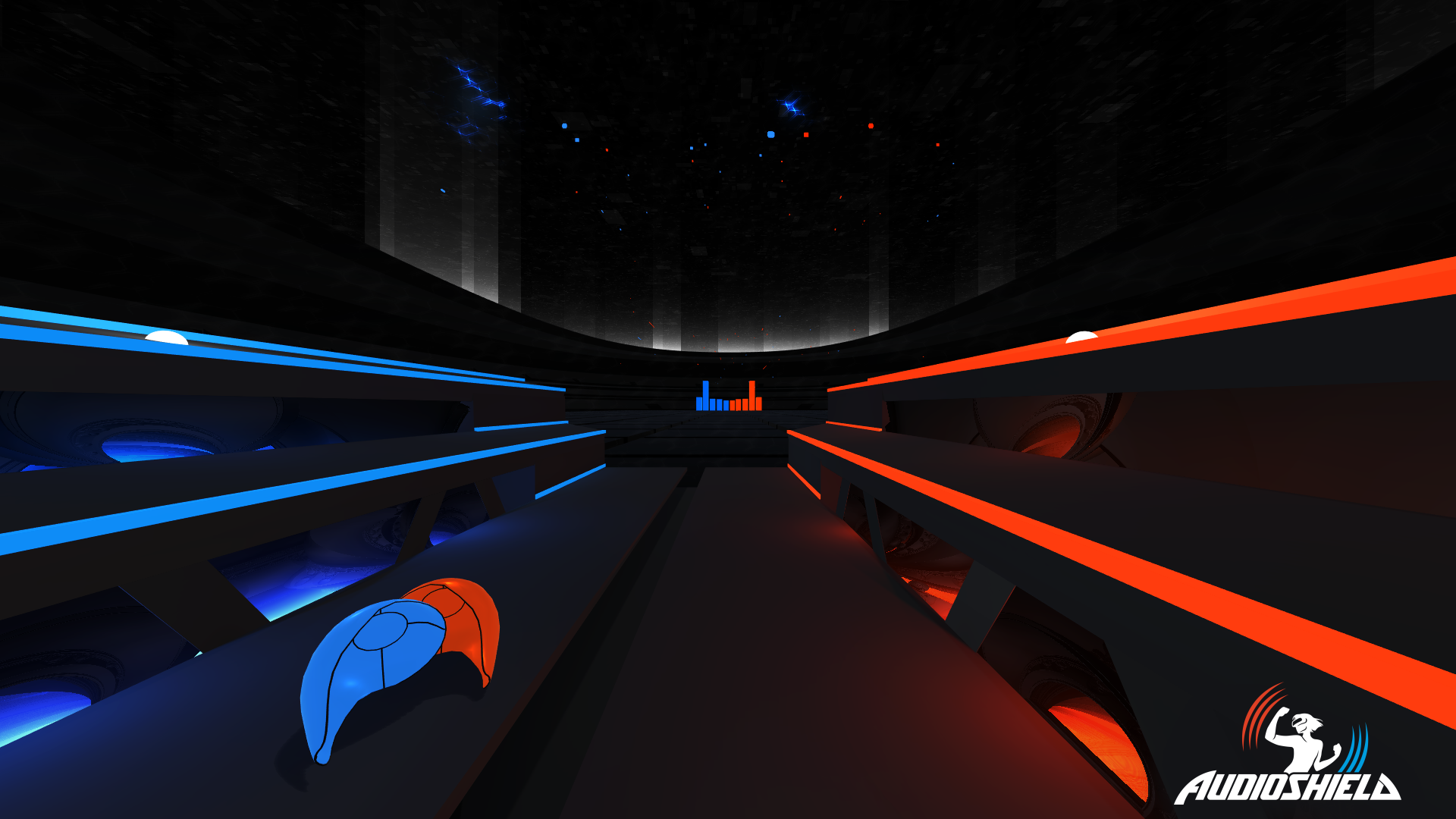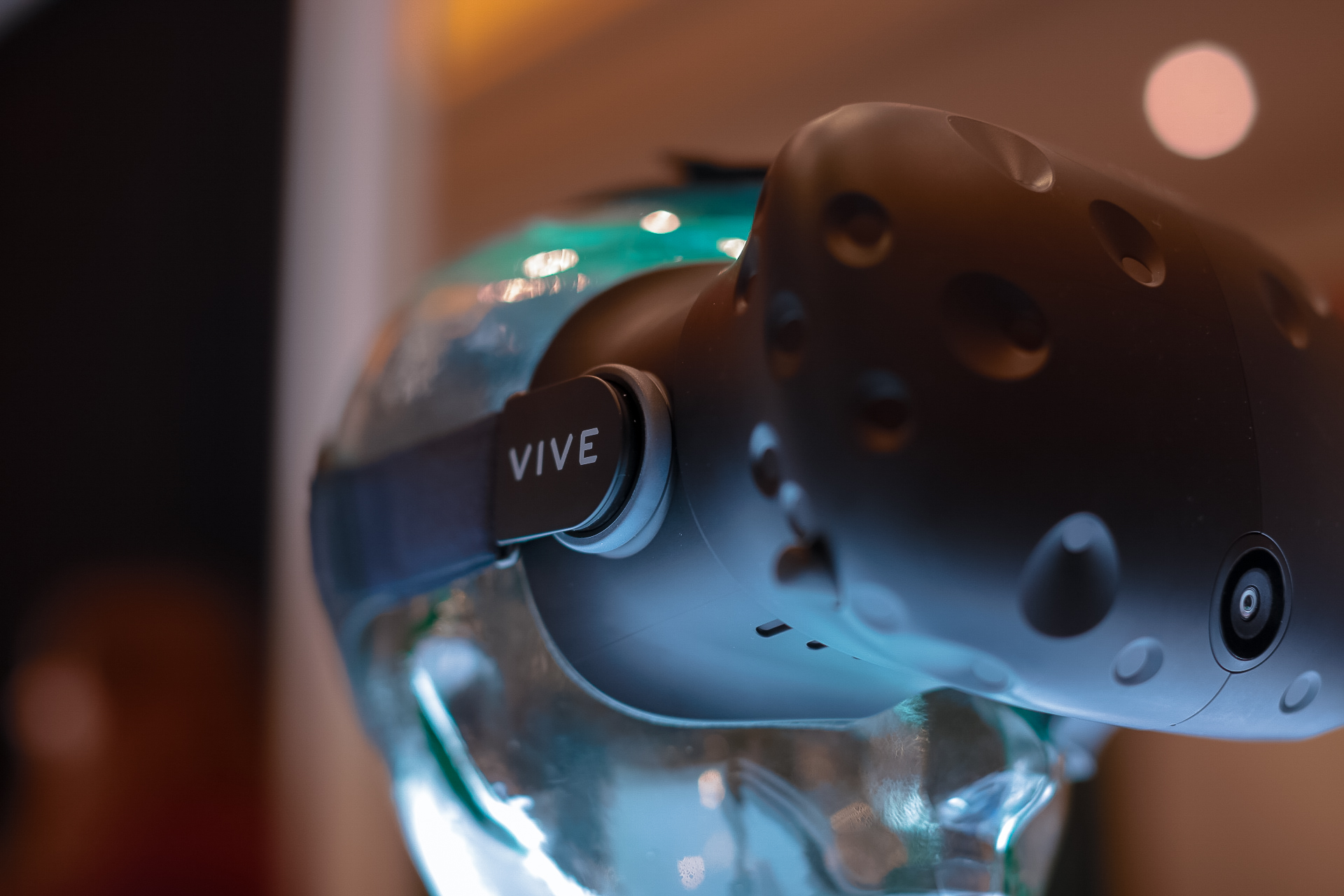Virtual punching, real music in the new game from Audiosurf's creator

In 2008, Dylan Fitterer released the first game to support Valve’s Steamworks platform (other than Valve’s own games, of course). You’ve almost certainly heard of it: Audiosurf, a music game that builds courses around whatever song you feed into its algorithm. It’s fitting, then, that Fitterer would also be releasing the first music game on Valve’s SteamVR platform. The biggest surprise of Valve’s VR games showcase was his new game Audioshield, which charges you with punching along to the beat as music flies towards your face. If you think that sounds like a workout, you are very, very right.

I saw 11 other VR games coming to the Vive at Valve's recent event. Read about all of them here.
“I like to unwind with Audioshield,” Fitterer said when we spoke at the end of Valve’s developer showcase. “It allows you to make it as much of a fitness experience as you want. You can hold back and play more conservatively, or you can really go for it and punch at the incoming meteors. And then you really are getting more of a fitness element, which is what I like to do. At this point I’ve added style points, so punching actually rewards you in gameplay terms. You punch hard, you get bonus points at the end.”
Where Audiosurf is all about moving forward, in Audioshield you stand still; the music, analyzed by Fitterer's algorithm and sourced from Soundcloud or your personal library, comes to you. Lines of light blue and orange orbs fly towards you, and you block them with glowing shields on each arm. The left is blue, the right orange, with a translucent aesthetic that would be at home in Tron Legacy. The orbs pulse with the beat as they approach. Blocking them successfully often requires rapidly moving each arm from left to right, holding for a moment to catch a long chain, then whipping to the other side to catch a stray orb, then back for another chain. It’s already a workout, but when a song kicks into high gear, the orbs start flying at you from above.
Bombing at you, as Fitterer likes to say. VR Missile Command inside a neon rave, set to your own music.
Earlier in development, all the orbs bombed at you, but Fitterer decided to segment it—partially because thrusting the controllers above your head for the duration of a song is, it turns out, pretty exhausting. But the exercise involved isn’t an accident. When Fitterer first started prototyping in VR, he built an exercise bike game.
“I built this Bluetooth accelerometer and ziptied it to one of the pedals of my exercise bike,” he said, laughing. “I built this little version of Audiosurf I guess, where the whole idea was to pedal faster the faster the music gets. Which is kinda how I exercise, I do that anyway. So I built some software that scored you on that, and I never actually got to the point of putting you in the headset because there were too many other reasons this was a bad idea. But it was cool, in a way. It was noisy. I’d want to compete with myself to get faster and faster RPMs.”
"As Audioshield becomes more difficult, it becomes more physically difficult."
After that, he moved on to VR support for Audiosurf 2. But he found it too intense for newcomers.
Keep up to date with the most important stories and the best deals, as picked by the PC Gamer team.
“I started thinking, how can I take this and make it comfortable for people who are new to VR, who haven’t really gotten to the point where a sinking stomach feeling can be a positive thing? So I started with tricking your brain [about] what’s moving. Am I moving, or is the track moving towards me? I eventually decided what I really want is a player who’s in proper room scale VR who only moves when they move.”
Playing Audioshield brought back fond memories of working out with Wii Sport’s simple but satisfying boxing minigame, and it didn’t even occur to me until afterwards that I must’ve looked absurd punching into the air and swiping my arms left and right to block as many orbs as I could. I was immersed. Even so, as I was having fun in the moment I felt like the minimalist design may border on being too simple—that there’s not enough going on in Audioshield to make me want to don a headset to play it.
Perhaps that’s down to my expectations for rhythm games. Japanese rhythm games deliver sensory overload as you slap buttons and screens to the beat. Where were the other colors, the score pop-ups and combos and intense effects in Audioshield? Would those things make the game better?
“My feeling right now is that no, it doesn’t need that,” Fitterer said. “Or at least not yet anyway. The purple blocks are a chord where you combine your two shields to make the purple. There’s more chords you could do, or you could use buttons to change individual shields. There could be four colors. There are a lot of ways to make it a more involved game. Right now I’m not thinking that’s the direction I’m going to take. Not yet, anyway. Right now it’s as it becomes more difficult, it becomes more physically difficult. It’s more about perceiving farther ahead in the music, doing a better job of anticipating. The game is giving you all this information about the future, really, what’s going to happen in the song. Getting to the more advanced levels of play are all about reading that future better so you kind of prepare yourself for the next move and the one after that.”

Much as I like the information overload in rhythm games, I’ve never played one in VR before. And as we’re learning more and more, what works outside of VR isn’t always what’s best in VR. I wanted more feedback on how I was scoring as I played the game, but maybe that would’ve just been distracting.
“There’s challenges when communicating things to players when they’re in VR without breaking them out of this close connection,” Fitterer said. “It’s you and the music. There’s a little fragility to it that I don’t want to mess up.”
Audioshield as it stands represents about six months of work, and FItterer hopes to have it ready to launch with the Vive in a few months time. There’s currently only one environment in the game, and he hopes to add another one before release. I asked about modding support, which seems an ideal way to give Audioshield more variety.
“I think you’re right on, and what I found with AUdiosurf 2 is the community is there and they do fantastic work,” he said. “There are so many awesome skins on the Audiosurf 2 workshop. I’d love to do that again. I don’t want to promise that, though, because it’s a lot of work. So we’ll see.”

Wes has been covering games and hardware for more than 10 years, first at tech sites like The Wirecutter and Tested before joining the PC Gamer team in 2014. Wes plays a little bit of everything, but he'll always jump at the chance to cover emulation and Japanese games.
When he's not obsessively optimizing and re-optimizing a tangle of conveyor belts in Satisfactory (it's really becoming a problem), he's probably playing a 20-year-old Final Fantasy or some opaque ASCII roguelike. With a focus on writing and editing features, he seeks out personal stories and in-depth histories from the corners of PC gaming and its niche communities. 50% pizza by volume (deep dish, to be specific).

